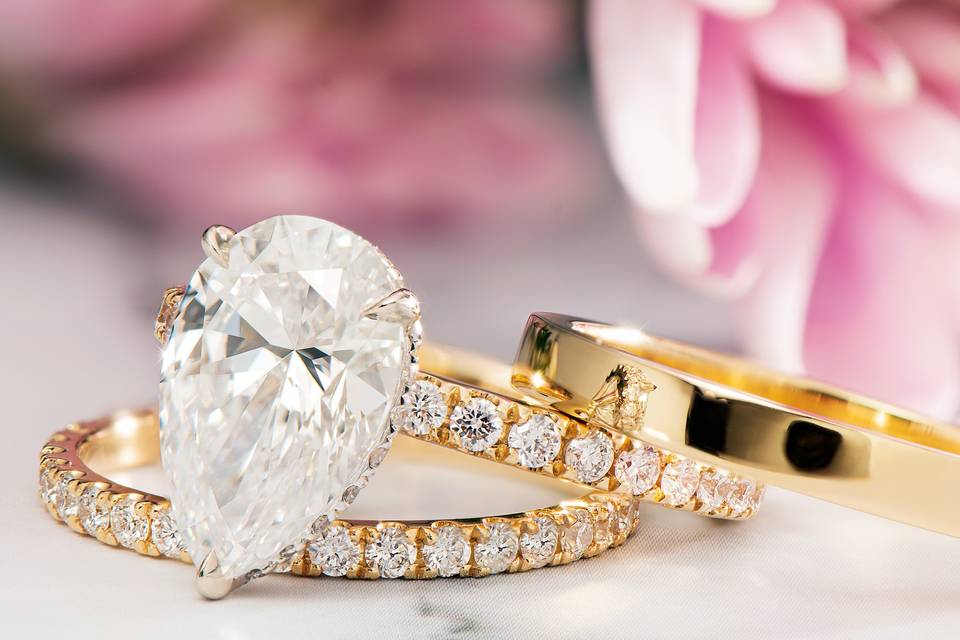
Understanding the 4Cs of Diamonds: Cut, Color, Clarity, and Carat
When purchasing a diamond, one must consider the 4Cs—Cut, Color, Clarity, and Carat. These four characteristics are universally accepted standards for evaluating the quality and value of diamonds. In this comprehensive guide, we delve into each of these criteria in detail, providing you with all the information necessary to make an informed decision.
Cut: The Most Critical Factor
The cut of a diamond significantly impacts its brilliance and sparkle. Often misunderstood, the cut does not refer to the shape of the diamond (such as round, oval, or princess) but to how well the diamond’s facets interact with light. A well-cut diamond will reflect light internally from one mirror-like facet to another and disperse it through the top of the stone, resulting in maximum brilliance.
The Grading of Diamond Cuts
Cut grading is categorized by several parameters:
- Proportions: The relationship between the diamond’s depth, table size, and crown height.
- Symmetry: The precision of the diamond’s shape and the alignment of its facets.
- Polish: The smoothness of the diamond’s surface.
The Gemological Institute of America (GIA) grades diamond cuts from Excellent to Poor. Diamonds with an Excellent or Very Good cut grade are highly recommended for their superior light performance.
Shapes and Their Influence on Cut Quality
While the most popular diamond shape is the round brilliant, other shapes include the marquise, oval, pear, and emerald. Each shape has unique properties that affect how the cut quality can influence the diamond’s overall appearance and value.
Color: The Second Most Important Attribute
The color of a diamond is graded on a scale from D (colorless) to Z (light yellow or brown). The less color a diamond has, the higher its value and rarity. Diamonds graded D are extremely rare and highly sought after for their lack of color.
Impact of Color on Value
Even subtle differences in color can significantly impact the price of a diamond. For instance lab diamonds, a diamond graded G will appear almost colorless and can be more affordable than a D grade diamond while still offering a visually stunning appearance.
Fluorescence and Color Perception
Diamond fluorescence can also affect color perception. Fluorescence refers to the diamond’s ability to emit a soft colored glow when exposed to ultraviolet light. While some buyers prefer diamonds with strong fluorescence for their unique visual effects, others may opt for diamonds with little to no fluorescence to avoid any potential color distortions.
Clarity: Evaluating Internal and External Flaws
Clarity measures the purity of a diamond and is determined by the number, size, and position of internal inclusions and external blemishes. The fewer the inclusions and blemishes, the higher the diamond’s clarity grade and value.
Clarity Grading Scale
The GIA Clarity Scale includes:
- Flawless (FL): No inclusions or blemishes visible under 10x magnification.
- Internally Flawless (IF): No inclusions visible under 10x magnification.
- Very Very Slightly Included (VVS1 and VVS2): Inclusions are difficult to see under 10x magnification.
- Very Slightly Included (VS1 and VS2): Inclusions are minor and range from difficult to somewhat easy to see under 10x magnification.
- Slightly Included (SI1 and SI2): Inclusions are noticeable under 10x magnification.
- Included (I1, I2, and I3): Inclusions are obvious under 10x magnification and may affect transparency and brilliance.
Significance of Clarity in Selection
While Flawless 4c diamond are exceedingly rare, diamonds in the VS1 to SI2 range offer an excellent balance between beauty and value. Most inclusions in these grades are not visible to the naked eye, allowing for a stunning appearance without the premium price of higher clarity grades.
Carat: The Weight Measurement of Diamonds
Carat refers to the weight of the diamond, with one carat equaling 200 milligrams. This is the most straightforward of the 4Cs, yet it significantly impacts the diamond’s price. Larger diamonds are rarer and thus more valuable, but carat weight alone does not determine the overall quality of the diamond.
Balancing Carat with Other Cs
When selecting a diamond, it is essential to consider carat weight alongside cut, color, and clarity. A well-balanced approach ensures that the diamond you choose has the best combination of size and quality for your budget. For instance, a slightly smaller diamond with an excellent cut will appear more brilliant than a larger diamond with a poor cut.
Conclusion: Making an Informed Decision
Understanding the 4Cs—Cut, Color, Clarity, and Carat—is crucial for making an informed purchase. Each characteristic plays a significant role in determining the diamond’s beauty and value. By prioritizing cut and balancing the other factors, you can find a diamond that offers exceptional brilliance and is worth the investment.


